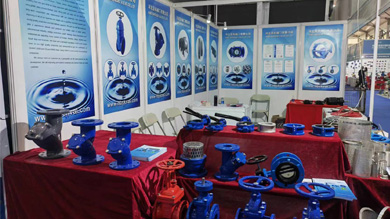10 月 . 09, 2024 21:27 Back to list
industrial gate valve
The Industrial Gate Valve A Key Component in Fluid Control
In the world of industrial fluid control, the gate valve plays a crucial role in regulating the flow of liquids and gases through pipelines. Understanding its design, functionality, and applications can provide insights into why it is a preferred choice for various industries. This article will delve into the intricacies of industrial gate valves, exploring their types, advantages, and considerations for implementation.
What is a Gate Valve?
A gate valve is a type of valve that opens or closes by lifting a gate out of the path of the fluid. It is designed to allow for the complete flow of fluid in either direction, making it an effective choice for applications that require minimal pressure drop and full flow with low resistance. Typically, the body of a gate valve is constructed from robust materials such as cast iron, stainless steel, or brass, depending on the application and the nature of the fluids being transported.
Types of Gate Valves
Gate valves can be classified into several types based on their design and the materials used
1. Wedge Gate Valve The most common type, featuring a wedge-shaped gate that is forced into the seat when closed. This design ensures a tight seal, preventing leakage. 2. Parallel Gate Valve Utilizes a parallel gate that provides a more uniform sealing surface. This type is suitable for high-pressure applications but may not always provide the same level of sealing integrity as a wedge-type valve.
3. Expanding Gate Valve Designed to expand in order to create a tighter seal as pressure increases. This is particularly useful in high-pressure environments.
4. Slab Gate Valve An alternative design where the gate is a flat slab that moves up and down, providing excellent sealing and low friction.
industrial gate valve

Advantages of Using Gate Valves
One of the primary advantages of gate valves is their ability to provide a straight-line flow path, minimizing turbulence and pressure loss in the system. They are particularly effective in large-diameter pipelines and applications where a full flow is necessary, such as in water supply systems, fire protection systems, and oil and gas processing.
Additionally, gate valves are known for their durability and longevity. With proper maintenance, including regular inspections and lubrication of the moving parts, gate valves can function effectively for many years, reducing the need for frequent replacements.
Considerations for Implementation
When selecting gate valves for industrial applications, several factors must be considered. First and foremost, the pressure and temperature specifications of the fluid system should be evaluated. Different materials will perform better under varying conditions, so understanding the operating environment is crucial.
Moreover, the orientation of the gate valve in the pipeline can influence its effectiveness. While gate valves can be installed in horizontal or vertical positions, ensuring proper alignment and support is vital to maintain optimal performance.
Conclusion
Industrial gate valves are an essential component in fluid control systems, providing reliable service in various sectors, from water treatment facilities to oil refineries. Their design allows for minimal flow resistance and a durable construction that withstands harsh environments. By understanding the various types, advantages, and considerations involved in selecting gate valves, industries can enhance their operations and achieve greater efficiency in fluid management. As technology continues to advance, gate valves are expected to evolve further, offering even more robust solutions in fluid control systems.
Share
-
Understanding the Differences Between Wafer Type Butterfly Valve and Lugged Butterfly ValveNewsOct.25,2024
-
The Efficiency of Wafer Type Butterfly Valve and Lugged Butterfly ValveNewsOct.25,2024
-
The Ultimate Guide to Industrial Swing Check Valve: Performance, Installation, and MaintenanceNewsOct.25,2024
-
Superior Performance with Industrial Swing Check Valve: The Essential Valve for Any SystemNewsOct.25,2024
-
Industrial Swing Check Valve: The Ideal Solution for Flow ControlNewsOct.25,2024
-
You Need to Know About Industrial Swing Check Valve: Functionality, Scope, and PerformanceNewsOct.25,2024